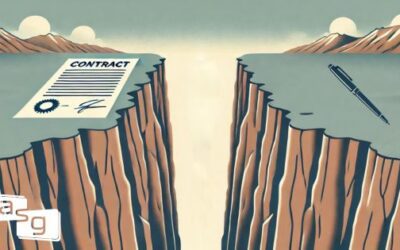Most of you are probably too young to remember the start of electronic communication. In those days we’d craft a generic sales email and then blast it out to thousands of contacts hoping for a response. Those were simpler times. But today, that’s not gonna cut it. As we navigate today’s digital age, there’s a lot more to it. Email, text, and direct messages are the centerpiece of modern correspondence. People don’t even answer the phone anymore. Getting an email or LinkedIn message read is a damn near science. Our brains, finely tuned by evolution, have evolved in how we engage with these messages.
The Challenge of Getting Sales Emails Read
Getting an email read is one of the greatest challenges in sales and marketing today. Every day we’re witnessing an exodus from traditional phone calls. Just check LinkedIn, I can almost guarantee there’s a sales influencer who’s yelling that cold calls and cold outreach are dead today. Email is the go-to communication tool (for now). Yet, most sales and marketing professionals find themselves drowning in the deep end when it comes to writing a compelling email. We live in a screen dominated world where comparing people’s attention span to a goldfish is offensive to the goldfish. Composing an email that resonates is a vital and elusive skill.
The Reality of Email Open Rates
Consider this: Hubspot says less than a quarter (24%) of the sales emails we send ever see the light of day. That doesn’t include a response. Let that sink in for a minute; out of every 100 emails you labor over only 24 will be opened. If, and that’s a big if, you manage to get a 10% response rate what do you get? Not even 2.5 responses. Crushed it. Not meetings, not sales opportunities, just a response.
Those are NOT odds I’d want to live or die by. It’s a brutal, harsh reality of the sales world. If your sales organizations have bet on email as the backbone of your inbound or outbound sales strategy, you’re going to need to be maniacal at crafting compelling emails.
The Science Behind Compelling Emails
The problem with the emails written today is that most of you don’t understand the science behind the email. Yes, I said it, there’s a science to the art of crafting emails that not only get opened but trigger a response. If you want to write good cold emails, you’re going to have to understand the underlying science.
Our brains are wired to be masters of efficiency. They’re finely tuned machines designed to conserve energy and resources. Part of this efficiency and resource conservation requires it to filter out the familiar, repetitive, and expected. We have an aversion to expending resources on what our brains have already catalogued as “business as usual.” When we see an inbox littered with emojis, free trials, and discounts it triggers our brain to move along, “I’ve seen this before, nothing to see here.”
But, when there’s something new or unexpected, the brain stops. The anterior cingulate cortex (ACC) now takes center stage. The ACC, in scientific terms, is the ‘oh-shit’ circuit. It keeps us honest, it’s job is to pay attention when the rest of the brain is on autopilot.
The Brain’s Role in Email Engagement
Think of it this way. Our brain is essentially just cataloging and archiving our day to day life. It has records of previous days in a mental file cabinet and can predict what’s coming next. The brain understands what to expect when we step into the office, the inevitable traffic when we’re running late, and that Jerry is going to grab the last donut in the breakroom. It knows that more than 3/4s of the emails in our inbox are going to be garbage. The brain switches to autopilot as you finish that first cup of coffee and empty the inbox which essentially frees up it’s capacity to focus on more important matters.
Day in and day out this process runs smoothly until one day there’s a glitch. The proverbial record scratch moment. Something unexpected disrupts this pattern. It’s a plot twist, the ACC jumps into action, and all hell breaks loose. All of our brainpower is relocated to become engrossed, curious, and ready to decode this new puzzle.
Leveraging the Science for Sales Emails
Being aware of the science behind attention is a huge advantage in cold emails. You’ve cracked open the door of email engagement – the ‘oh-shit’ circuit. The key to triggering that circuit? Creating intrigue. There are three distinct ways to do this.
Create a knowledge gap.
When we know something our prospects don’t, they become curious. People don’t like to feel they don’t know enough, particularly in their field. When a knowledge gap exists, specifically in an area someone feels or believes they are knowledgeable in, the error-negativity signal goes off, forcing the prospect to want to fill the gap, to want the information. Do the research, learn more than your prospects to create a knowledge gap and offer them some insight that will get them to want to engage in learning more.
Surprise
When we’re surprised by something, it stops us in our tracks. Surprise is one of the best ways to trigger the error-negativity signal. Surprise is when you offer something the prospect wasn’t expecting. Almost all sales emails look, act, and feel the same. Therefore the brain knows exactly what’s coming and blocks it out and tells the prospect to delete. When an email surprises a prospect, the prospects error-negativity or “oh-shit” circuit springs into action, making sure the prospect takes note of what just happened. That’s why creative, surprise emails only work once. Trying it again with the same person and the brain says; “I’ve seen this before, move on.”
Mystery
Creating mystery is another way of creating intrigue by triggering the error-negativity signal. When a mystery is created, when a story or scenario that we can’t solve for or guess the outcome is present, we get sucked in trying to solve it. Our brains don’t like being in the dark, so we find ourselves looking for the answers in order move on. If your email is mysterious, prospects will respond in hopes of getting an answer.
Getting emails opened is no small order. We are becoming more and more desensitized to them. We are blocking out more and more of our email, and so are our prospects. We’re deleting them faster and reading fewer and fewer of them. The one button delete is becoming more and more common. We’re not even scanning the first few lines. If it doesn’t stand out or capture our attention in half a second, we’re out.
If you want to improve your email open and response rates, you have to start creating emails that are intriguing. You have to understand the science and how our brain works. You have to trigger the error-negativity signal.
The same, boring, self-centered, valueless emails aren’t going to cut it. Leverage the science, learn how to create mystery, surprise, or a knowledge gap in your emails and trigger the “oh-shit” signal. It’s the only way to win.
Want an example of an email that got my attention? Check out this segment of the Sales Top To Bottom Podcast.






Hi Keenan,
Love the content and your work.
To help understand this further, could you post an email example?
Hey Andy, try this example from an episode of Top to Bottom: https://youtu.be/SoCkIbEQnrQ?si=KoAMsh1tdtZ3q2fY&t=201